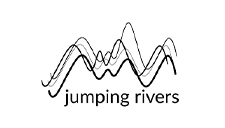Companies worldwide are waking up to the importance of making the most of their data, and utilising data science to increase their efficiency, reduce waste, and reduce their environmental impact. Jumping Rivers is a data science company based in Newcastle upon Tyne, who have made it their mission to make data science accessible to everyone through their training programs, as well as providing bespoke solutions for modern business data-related problems.
Machine learning to identify risks to water supply interruption
JR has worked with Northumbrian Water on multiple projects; one such project developed a tool that allows mapping of the risk of interruption to the water supply. Not only are interruptions to the water supply a huge inconvenience to those living in affected areas, but Northumbrian Water and other utility providers face fines for breaks in the water supply that are over 24 hours. The ability to understand and predict these interruptions, and therefore aid decision-making on prioritisation, would reduce the cost to the client, and improve their customers’ experience.
Utilising modern machine learning techniques, JR built a custom simulation model for the potential impact of an interruption. The model can be used standalone or as an API available to other software. In this instance, Jumping Rivers also built a user-friendly visualisation web application, allowing non-technical users access to the underlying predictive and simulation models. When an event occurs, engineers now have an easy way to inspect the affected geographic areas, and simulate the potential impact to the neighbouring regions.
Solving the problem
Using this model, the client was able to both: gain insight into the probability of customers suffering a long interruption; and understand the number of customers that may be affected. The combination of models can aid decision-making when it comes to prioritising responses to events, significantly reducing the risk of customers suffering lengthy interruptions.
The development of a user-friendly interface allowed non-technical staff to engage and interact with the simulations to be able to make rapid decisions, with the aim to decrease response times and improve customer service.
This is a prime example of data being used to benefit the community – by investing in data now, time, money and water can be saved later down the line.



